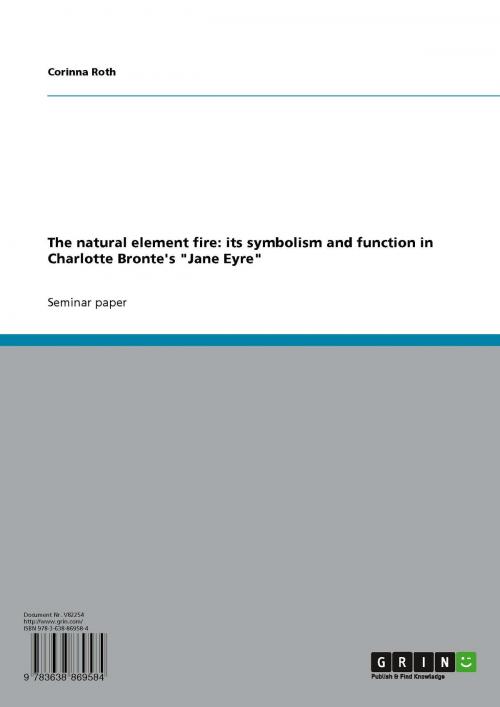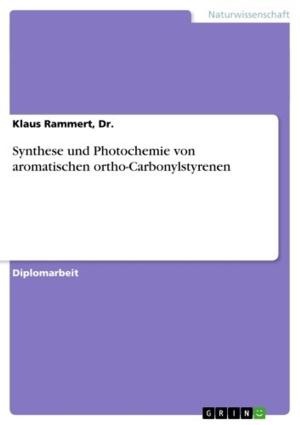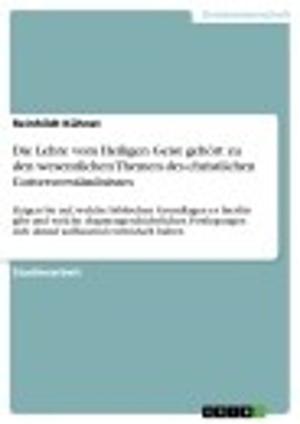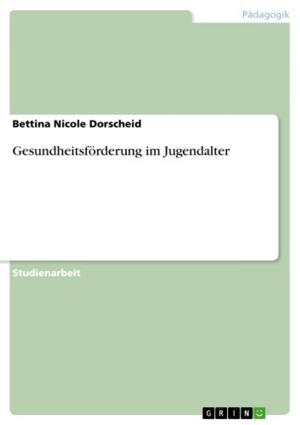The natural element fire: its symbolism and function in Charlotte Bronte's 'Jane Eyre'
Fiction & Literature, Literary Theory & Criticism, British| Author: | Corinna Roth | ISBN: | 9783638869584 |
| Publisher: | GRIN Verlag | Publication: | December 2, 2007 |
| Imprint: | GRIN Verlag | Language: | English |
| Author: | Corinna Roth |
| ISBN: | 9783638869584 |
| Publisher: | GRIN Verlag |
| Publication: | December 2, 2007 |
| Imprint: | GRIN Verlag |
| Language: | English |
Seminar paper from the year 2004 in the subject English Language and Literature Studies - Literature, grade: 1,3, Technical University of Chemnitz, course: Proseminar: Charlotte Bronte 'Jane Eyre', 6 entries in the bibliography, language: English, abstract: Charlotte Bronte's Jane Eyre is a lively composition of the imagery of landscape in correspondence to the experiences and the values of the heroine. Nature, one of the major themes in the novel, is expressed by four natural elements: fire, water, earth, and air, which are in a constant interaction. Fire, the most important element, has a symbolic function in the novel. Above all, it forms the character of the heroine Jane Eyre. Moreover, the varying facets of fire are a basic component of the novel and a determinant part in each locale of the setting. The story is a classic example of the congruence of the natural and the spiritual: the natural existence of fire is always related to Jane Eyre's state of mind and expressed by metaphors (Duthie 1986:134-137). In the first chapter of my paper I will give a general definition of the term and analyse the symbolism of the different types of the element on the basis of examples. In the next chapter I will have a closer look at the element fire in relation to Jane Eyre's state of mind.
Seminar paper from the year 2004 in the subject English Language and Literature Studies - Literature, grade: 1,3, Technical University of Chemnitz, course: Proseminar: Charlotte Bronte 'Jane Eyre', 6 entries in the bibliography, language: English, abstract: Charlotte Bronte's Jane Eyre is a lively composition of the imagery of landscape in correspondence to the experiences and the values of the heroine. Nature, one of the major themes in the novel, is expressed by four natural elements: fire, water, earth, and air, which are in a constant interaction. Fire, the most important element, has a symbolic function in the novel. Above all, it forms the character of the heroine Jane Eyre. Moreover, the varying facets of fire are a basic component of the novel and a determinant part in each locale of the setting. The story is a classic example of the congruence of the natural and the spiritual: the natural existence of fire is always related to Jane Eyre's state of mind and expressed by metaphors (Duthie 1986:134-137). In the first chapter of my paper I will give a general definition of the term and analyse the symbolism of the different types of the element on the basis of examples. In the next chapter I will have a closer look at the element fire in relation to Jane Eyre's state of mind.















